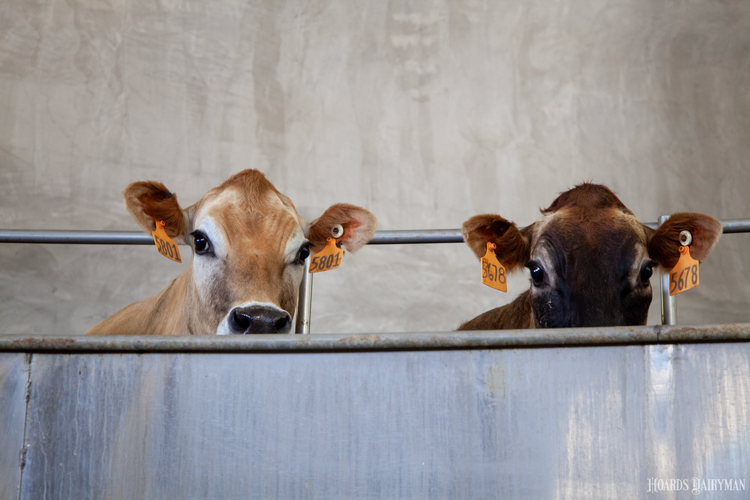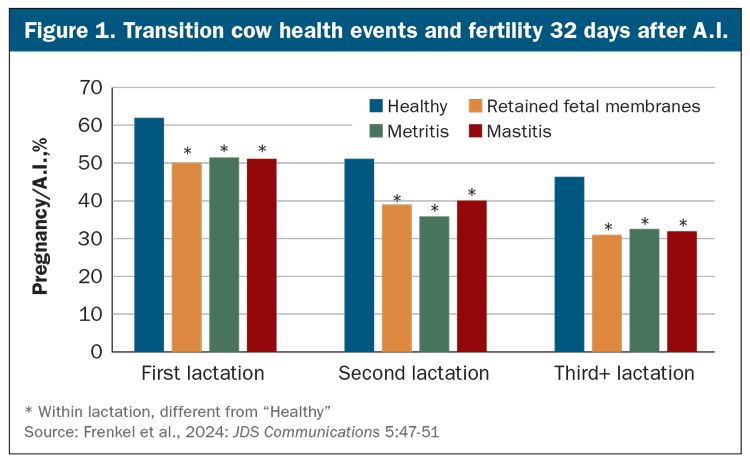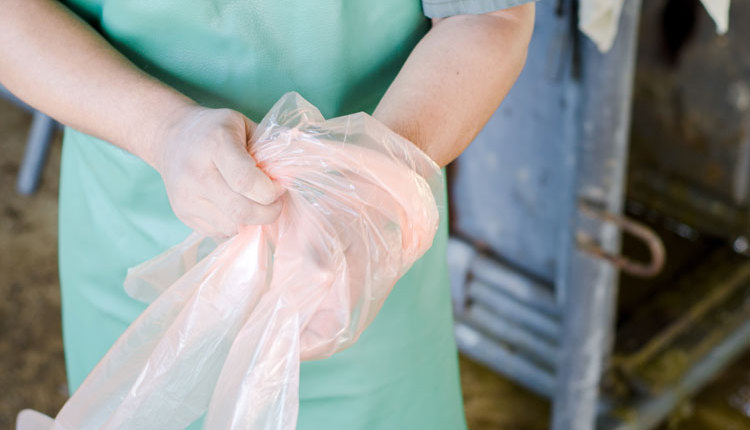
The reproductive performance of lactating dairy cattle has improved over the past decade due to better health and transition management strategies, genetic selection, and the adoption of programs such as double ovsynch for first timed A.I.
Cows receiving timed A.I. after double ovsynch have a higher pregnancy per A.I. (P/A.I.) compared with cows inseminated after detected estrus. When double ovsynch was compared with presynch ovsynch, P/A.I. was greater in cows enrolled in double ovsynch, with a larger effect in primiparous than multiparous animals.
Diseases in early lactation have been associated with reduced P/A.I. Recent work published by German, American, and Canadian scientists evaluated factors affecting P/A.I. in lactating Holstein cows enrolled in double ovsynch for first service.
A wide perspective
Six years of calving data from a commercial German dairy farm were used. Every postpartum cow was examined daily from calving to 10 days in milk (DIM). Visual assessments of general appearance, attitude, fetal membranes, vaginal discharge, udder health, lameness, and manure consistency were noted during the examinations.
Rectal temperature was measured using a digital thermometer. To evaluate uterine discharge, transrectal massage of the uterus was conducted daily. Blood ketone concentration was evaluated twice weekly using a cowside test. From 11 to 30 DIM, cows were evaluated for transition health problems based on visual observation and deviation in daily milk production.

Transition cow health events considered during the first 30 DIM included milk fever, retained fetal membranes, metritis, ketosis, and left displaced abomasum (LDA). Mastitis was considered during the first 100 DIM. Health event definitions were based on protocols established with the research team.
Cows received first service after double ovsynch. Trained farm personnel conducted pregnancy diagnoses 32 and 60 days after A.I. using ultrasonography. Pregnancy loss was defined as the proportion of pregnant cows 32 days after A.I. that were open 60 days after A.I.
The investigators evaluated two statistical models to assess the effect of each transition cow health event on P/A.I. at 32 days after A.I. and pregnancy loss from 32 to 60 days after A.I. separately by lactation number (first, second, and third and greater). The final data set included 15,041 Holstein cows.
Disease caused drops
Disease incidence (cows with at least one transition health event) for first, second, and third lactation was 20%, 34.9%, and 53.9%, respectively. This agrees with previous research results. The most prevalent transition cow health events for each lactation number were metritis (first, 10.7%), clinical mastitis and ketosis (second, both 16.6%), and ketosis (third, 33.2%).
For cows with no transition health events, P/A.I. declined as parity rose and was 61.6%, 51.1%, and 45.5% for cows in first, second, and third lactations, respectively (Figure 1). Not surprisingly, P/A.I. differed by month, with the lowest P/A.I. during the summer (July and August). Pregnancy loss climbed with greater age (first lactation 5.1%; second lactation 8.1%; third lactation 9.8%). This decline in reproductive performance in older cows has been described previously.
The association of health events and fertility 32 days after A.I. is shown in the figure. All cows, regardless of lactation number, with retained fetal membranes, metritis, and mastitis had a lower P/A.I. 32 days after insemination compared with healthy cows. Further, second lactation cows with an LDA, and third and greater lactation cows with milk fever, ketosis, or LDA, had reduced P/A.I. 32 days after A.I.
Retained fetal membranes and metritis were associated with pregnancy loss in all cows regardless of lactation number; however, mastitis, milk fever, ketosis, and LDA were not associated with pregnancy loss, in contrast to a previous study.
The lack of an association of LDA and ketosis with P/A.I. in first lactation cows should be interpreted carefully. This may be related, at least partially, to a low incidence in this study. Cows with ketosis experience more anestrous and anovulation during the voluntary waiting period. Anovular cows submitted to double ovsynch may be “jump started,” or ovulate due to the protocol. However, multiparous cows with ketosis in this study had a lower P/A.I.
There is no reproductive protocol that guarantees high fertility. The results described here illuminate the importance of transition health to fertility in cows submitted to a double ovsynch protocol for first service. Further insight into the relationship of health events, reproduction, and increased age may be gleaned as each health event in cows in third or greater lactation was negatively associated with P/A.I. compared with healthy cows.
Review current transition cow health practices with your team, including the herd veterinarian, extension agents, and allied industry. Implement changes where necessary and evaluate your transition cow management and first service breeding program to ensure the health and fertility of your cattle. Happy A.I. breeding!





